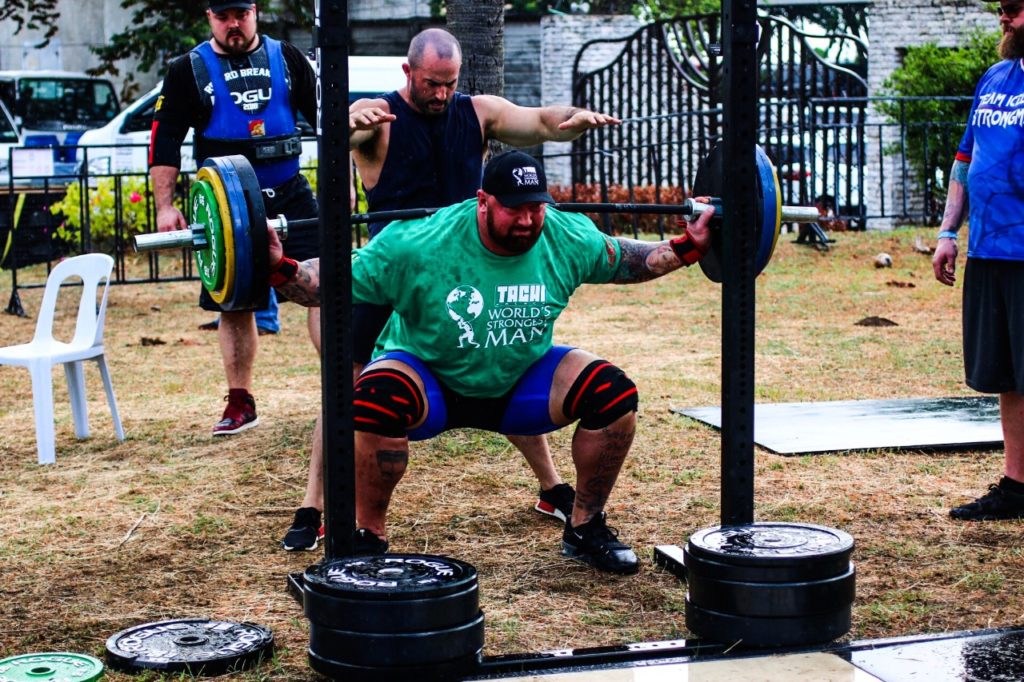Did you know that the shoes your client wears can REALLY impact your client’s lifts?
The impact of footwear in squat and deadlift is a major one. Let’s use the barbell back squat as an example used by lifters in strength training. The barbell squat is typically performed using standard sports shoes or specifically designed weightlifting shoes, although there is an increasing number of lifters who prefer to squat barefoot or with flat-soled shoes. You may have seem people often taking off their shoes and only wearing socks or barefoot on the lifting platform at the gym – and this is why.
Different footwear can actually change the way you target different muscles of the lower body as it manipulates the body when under load. Again, using the squat as an example – you can use weightlifting shoes for some variations and flat soled shoes for others depending on what you want to achieve. Knowing the difference can truly take your understanding of lifting biomechanics to the next level!
Going bare foot or using a flat sole shoe presents itself in a squat – allows for more torso lean (forward) due to a lack of heel elevation. This also forces this movement to be more hip dominance in the movement and recruiting more hip extensors – so think glutes, adductors as opposed to knee extensors.

Now, you may have seen many lifters use Converse ‘Chuck Taylors’ when lifting – whether it be squat, deadlift or bench day. Are these the best shoes to lift in? It’s often considered a great shoe because of its flat slope. However, they may be TOO NAROW – that ends up boxing in to the toes, making it harmful for your foot to function, decreasing your ability to stabilise from the group up and leads to knees waning in – we need this to ensure we are spreading our toes out when lifting, particularly during a squat & a deadlift.
Wearing weightlifting shoes adds heel elevation and allows for the torso to be more upright. The more upright the torso, the more knee bend you will get throughout the movement. This will mean you will be able to sit the hamstrings onto the calves in an ‘ass to grass’ squat more easily than its flat soled shoes or going barefoot.
When researching the impact of footwear, scientific studies show that weightlifting shoes significantly reduce angle flexion and increase knee flexion than regular sports shoes, whilst allowing for more upright toros position and greater knee moment even when not under load (2). The results of this study were consistent with the idea that weightlifting shoes permit a more knee flexed, upright posture during squatting, and provide preliminary evidence that experienced squatters are more able to exploit this effect over beginners.
If choosing weightlifting shoes – what do you look for?
Heel height is one component as most vary between half to one inch. They also vary in width and again you don’t want to have your toes cramped in a narrow space. It’s important that your feet feel supported within your shoes in all directions.
So does this mean we can’t wear normal sports shoes when I lift?
If you’re coming in to a heavy training day for a main lift – bench squat or deadlift – it’s not recommended. Going barefoot or wearing appropriate footwear offers a number of benefits for stability, mobility, coordination, and balance. Going barefoot for instances actually ACTIVATES your central nervous system, helps activate your glutes and core to improve balance and increased bodily awareness, and it strengthens the deep muscles in your foot which translates to improved strength of the ankles, knees, hips, and back.
Here’s the reality: Running shoes are not made for lifting weights. If you’re skeptical about going through the trouble of buying new shoes just to lift, we can assure you that you won’t regret it—especially if you’re serious about hitting the iron.
Sports shoes are also an unstable surface and inhibits your power output. Think about Nike Air Shoes or any ‘spongy soled’ running shoe – these are going to actually inhibit your ability to drive through the floor and stabilise your feet and increases your risk of injury. The more minimal the structure of lifting shoes actually allows the foot to stabilize itself and get stronger.
The bottom line: Weightlifting shoes are called so for a reason and the barefoot posse at the gym have their reasons backed by science. The impact of footwear is not one to be overlooked. They’re designed to help you perform your best and keep your feet from sustaining injuries. The benefits definitely outweigh the cost of an extra pair of shoes if you’re going to get serious and go heavy.
If you opt to go barefoot instead, that’s absolutely fine but do put those sports shoes aside when you think about hitting the squat rack.
Want to learn the principles of technique execution for all the primary and accessory lifts, such as the bench press, squat, deadlift and all their variations?
References
- Kassal, G. (2017). Barefoot Strength Training. Here’s the deal? Retrieved from: https://barbend.com/barefoot-strength-training/
- Legg, H., Glaister, M., Cleather, D.J., Goodwin, J. (2020). The effect of weight lifting shoes on the kinetics and kinematics of a Back squat. Journal of Sports Science. Retreiver from:https://pubmed.ncbi.nlm.nih.gov/27096286/
- Oreb, Sebastian. (2020). Strength Systems International Certification Level 1 & 2. Clean Health Fitness Institute.






